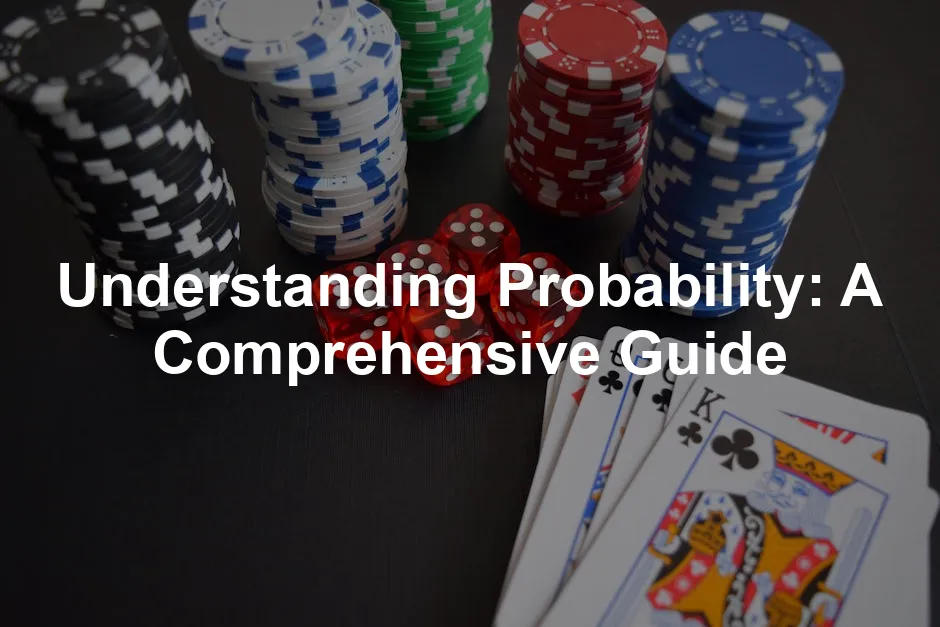The probability is:
P(5) = \frac{1}{6}If you roll two dice, there are 36 total outcomes. The probability of rolling a sum of 7 can be calculated by counting the favorable combinations: (1,6), (2,5), (3,4), (4,3), (5,2), (6,1). Thus, the probability is:
P(\text{Sum} = 7) = \frac{6}{36} = \frac{1}{6}Example 3: Playing Cards
In a standard deck of 52 cards, consider the probability of drawing an Ace:
- Total outcomes: 52
- Favorable outcomes for Aces: 4
So, the probability is:
P(\text{Ace}) = \frac{4}{52} = \frac{1}{13}If you want to calculate the probability of drawing a red card (hearts or diamonds):
- Favorable outcomes: 26 (13 hearts + 13 diamonds)
The probability is:
P(\text{Red Card}) = \frac{26}{52} = \frac{1}{2}Visualizing Probability: Tree Diagrams and Probability Lines
Probability Tree Diagrams
Probability tree diagrams are fantastic tools for visualizing different outcomes of an event. They help break down complex probabilities into manageable parts.
To create a tree diagram:
- Start with a single point representing the initial event.
- Draw branches for each possible outcome from that event.
- Continue branching for subsequent events.
For example, consider flipping a coin twice. The first flip can result in Heads (H) or Tails (T). Each branch then splits again based on the second flip, leading to outcomes: HH, HT, TH, TT. This visual aid not only clarifies the possible outcomes but also makes it easy to calculate probabilities.
To find the probability of a specific outcome, multiply the probabilities along the branches leading to that outcome. For instance, the probability of getting HT is:
P(HT) = P(H) \cdot P(T) = \frac{1}{2} \cdot \frac{1}{2} = \frac{1}{4}
Using Probability Lines
Probability lines are another helpful way to represent probabilities visually. They graphically show the range of probabilities from 0 to 1.
Imagine a horizontal line where:
- 0 indicates impossible events.
- 1 indicates certain events.
By plotting specific probabilities along this line, you can easily compare different events. For instance, if the probability of rain tomorrow is 0.3, you can mark this point on the line, showing that it’s more likely to be dry than rainy (since 0.5 would represent an even chance).
Probability lines can also help in understanding cumulative probabilities. For instance, if two events are mutually exclusive, their probabilities can be represented on the line, emphasizing how their total probability doesn’t exceed 1.
In conclusion, utilizing tree diagrams and probability lines enhances our understanding of probability, making it easier to visualize and calculate outcomes effectively.

Real-World Applications of Probability
In Business and Finance
Probability plays a crucial role in business and finance, helping companies make informed decisions. Risk assessment is one of the primary applications. Businesses often evaluate the likelihood of various risks, such as market fluctuations or project failures. By quantifying these risks, companies can devise strategies to mitigate potential losses.
For instance, a retail company might analyze historical sales data to forecast future sales. If the data indicates a 70% chance of increased sales during the holiday season, the company may decide to ramp up inventory and marketing efforts. This predictive modeling is essential for effective budgeting and resource allocation. If you’re interested in a great resource for this, check out How to Measure Anything: Finding the Value of “Intangibles” in Business by Douglas W. Hubbard.
Another significant area is investment analysis. Investors use probability to assess the risk of different assets. By calculating the expected returns and their variance, they can determine which investments align with their risk tolerance. Financial advisors often rely on probability to construct diversified portfolios that minimize risk while maximizing potential returns.

In Medicine
In the medical field, probability is indispensable, especially in clinical trials and medical predictions. When testing new treatments, researchers must understand the probability of success versus failure. This involves calculating the likelihood that a treatment will lead to a positive outcome for patients. Explore the role of probability in clinical trials and genetic studies.
For example, a clinical trial for a new drug might show a 75% probability of effectiveness based on preliminary data. This information is crucial for regulatory approval and informs doctors and patients about treatment options.
Additionally, probability helps in predicting patient outcomes. For instance, if a patient undergoes surgery, doctors can use statistical models to estimate the likelihood of recovery based on various factors like age and overall health. These assessments guide treatment plans and improve patient care. If you’re curious about more advanced statistical methods, consider Statistical Inference by George Casella!

In AI and Machine Learning
Artificial Intelligence and machine learning heavily rely on probability to make predictions and decisions. Algorithms use probabilistic models to analyze data and identify patterns. For example, a spam filter uses probability to determine whether an email is spam based on the likelihood of certain keywords appearing in the message.
Bayesian networks are another application of probability in AI. These networks model the relationships between different variables, allowing for more accurate predictions. For instance, in healthcare, AI can predict disease risk by evaluating symptoms and patient history through a probabilistic approach. If you want to learn more about this approach, The Elements of Statistical Learning: Data Mining, Inference, and Prediction by Trevor Hastie is an excellent resource!
Moreover, reinforcement learning, a subset of machine learning, uses probability to optimize decision-making in uncertain environments. Agents learn to make decisions based on the calculated probabilities of various actions leading to desirable outcomes.

In Everyday Life
Probability influences many everyday decisions, often without us realizing it. Take insurance, for example. When purchasing a policy, companies assess the probability of claims based on statistical data. If you’re considering car insurance, the insurer evaluates factors like your driving record, age, and location to calculate your premium. Essentially, they’re betting against the odds that you’ll file a claim.
Betting is another area where probability is front and center. Gamblers often rely on odds to make decisions. For instance, in a game of poker, players must assess the probability of winning based on their hand versus potential hands of other players. Understanding these probabilities can significantly affect the strategies they use. If you fancy a game night, consider getting a Poker Set with Chips and Cards!
Furthermore, probability plays a role when we decide whether to carry an umbrella based on the weather forecast. A 30% chance of rain might persuade some to take an umbrella, while others might opt to risk getting wet. These daily choices highlight how probability shapes our lives, often guiding decisions we make based on perceived risks and rewards.
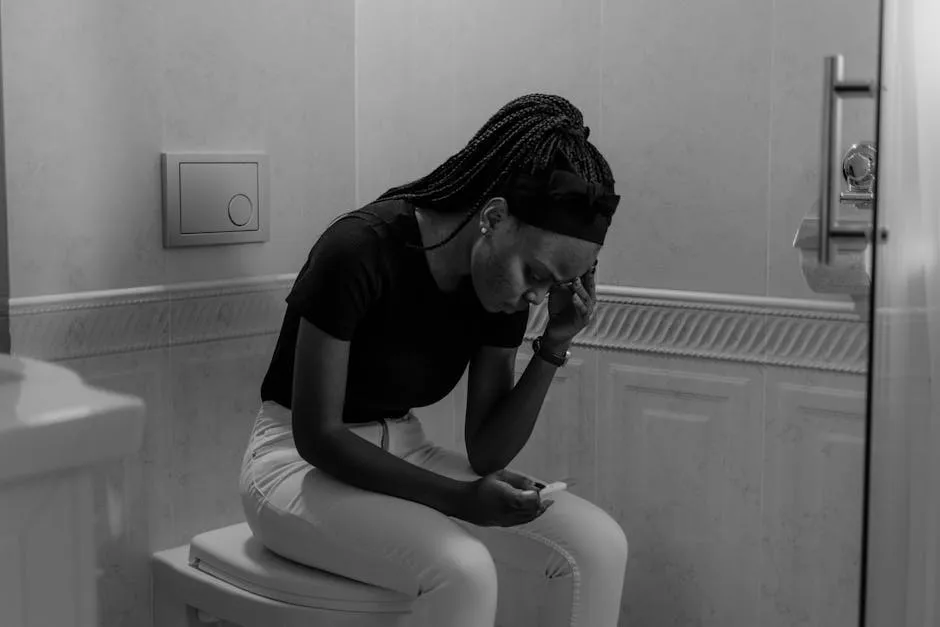
Common Probability Problems and Solutions
Coin Tossing
Coin tossing is a classic example of probability. When flipping a fair coin, there are two possible outcomes: heads (H) or tails (T). The probability of landing heads is P(H) = \frac{1}{2}, and similarly, P(T) = \frac{1}{2}.
If you flip two coins, the sample space expands to four outcomes: {(H, H), (H, T), (T, H), (T, T)}. The probability of getting at least one head when flipping two coins calculates as follows:
P(\text{At least 1 H}) = 1 - P(\text{No H}) = 1 - P(T, T) = 1 - \frac{1}{4} = \frac{3}{4}
Dice Rolling
Rolling a die introduces more complexity. A standard six-sided die has six outcomes: {1, 2, 3, 4, 5, 6}. The probability of rolling any specific number, say a 4, is:
P(4) = \frac{1}{6}If you roll two dice, you can calculate the probability of rolling a sum of 7. The combinations that yield this sum are (1,6), (2,5), (3,4), (4,3), (5,2), and (6,1). There are six combinations out of a total of 36 possible outcomes, giving:
P(\text{Sum} = 7) = \frac{6}{36} = \frac{1}{6}Drawing Cards from a Deck
In a standard deck of 52 cards, the probability of drawing a specific card, like the Ace of Spades, is straightforward. There is only one Ace of Spades, so:
P(\text{Ace of Spades}) = \frac{1}{52}If you want to calculate the probability of drawing a heart, there are 13 hearts in a deck:
P(\text{Heart}) = \frac{13}{52} = \frac{1}{4}The Birthday Problem
The birthday problem poses an interesting question: What is the probability that, in a group of people, at least two share a birthday? Surprisingly, with just 23 people, there’s about a 50% chance that two will share a birthday. The calculation involves considering the probability that no two people share a birthday and subtracting it from 1.
With n people, the formula becomes:
P(\text{at least 2 share birthday}) = 1 - P(\text{no shared birthday})Calculating this for 23 people leads to the surprising result of a 50.7% chance of a shared birthday, showcasing how intuition can sometimes mislead us regarding probability! If you’re interested in a deeper dive into coincidences and rare events, The Improbability Principle: Why Coincidences, Miracles, and Rare Events Happen Every Day by David Hand is a great read!

Conclusion
Understanding probability is not just an academic exercise; it’s a vital tool for navigating the uncertainties of everyday life. Whether you’re predicting the weather or deciding on your next bet at the poker table, probability helps quantify the unknown. It’s the secret sauce behind informed decision-making.
In academia, probability is the backbone of statistics, enabling researchers to analyze data trends and draw meaningful conclusions. For instance, when evaluating clinical trials, understanding the probability of outcomes can significantly impact treatment decisions. Similarly, businesses leverage probability to assess risks and forecast trends, ensuring they remain competitive in a rapidly changing marketplace. If you’re curious about a comprehensive course on probability and statistics, check out Probability and Statistics for Engineering and Science by Anthony J. Hayter.
In practical contexts, probability shapes how we manage risks—whether in insurance policies, investments, or health care decisions. For example, if you’re considering whether to carry an umbrella, a weather forecast predicting a 40% chance of rain can guide your choice. This application of probability makes it a powerful tool in everyday life.
For those intrigued by the mathematical underpinnings of probability, further studies can reveal even more fascinating applications. From exploring advanced concepts like Bayesian probability to understanding the law of large numbers, there’s a wealth of knowledge waiting to be uncovered.
So, don’t just skim the surface—get curious! Pick up a book or take a course on probability theory. Trust us, your future self will thank you for it, especially when you’re making decisions that involve uncertainty. A fantastic start would be The Black Swan: The Impact of the Highly Improbable by Nassim Nicholas Taleb.
FAQs
Please let us know what you think about our content by leaving a comment down below!
Thank you for reading till here 🙂
All images from Pexels
- Total outcomes: 2
- Favorable outcomes for Heads: 1
Thus, the probability of getting Heads is:
P(H) = \frac{1}{2}If you toss two coins, the sample space consists of four outcomes: {(H, H), (H, T), (T, H), (T, T)}. The probability of getting two Heads is:
P(2H) = \frac{1}{4}
Example 2: Dice
When rolling a standard six-sided die:
- Total outcomes: 6
- Favorable outcomes for rolling a 5: 1
The probability is:
P(5) = \frac{1}{6}If you roll two dice, there are 36 total outcomes. The probability of rolling a sum of 7 can be calculated by counting the favorable combinations: (1,6), (2,5), (3,4), (4,3), (5,2), (6,1). Thus, the probability is:
P(\text{Sum} = 7) = \frac{6}{36} = \frac{1}{6}Example 3: Playing Cards
In a standard deck of 52 cards, consider the probability of drawing an Ace:
- Total outcomes: 52
- Favorable outcomes for Aces: 4
So, the probability is:
P(\text{Ace}) = \frac{4}{52} = \frac{1}{13}If you want to calculate the probability of drawing a red card (hearts or diamonds):
- Favorable outcomes: 26 (13 hearts + 13 diamonds)
The probability is:
P(\text{Red Card}) = \frac{26}{52} = \frac{1}{2}Visualizing Probability: Tree Diagrams and Probability Lines
Probability Tree Diagrams
Probability tree diagrams are fantastic tools for visualizing different outcomes of an event. They help break down complex probabilities into manageable parts.
To create a tree diagram:
- Start with a single point representing the initial event.
- Draw branches for each possible outcome from that event.
- Continue branching for subsequent events.
For example, consider flipping a coin twice. The first flip can result in Heads (H) or Tails (T). Each branch then splits again based on the second flip, leading to outcomes: HH, HT, TH, TT. This visual aid not only clarifies the possible outcomes but also makes it easy to calculate probabilities.
To find the probability of a specific outcome, multiply the probabilities along the branches leading to that outcome. For instance, the probability of getting HT is:
P(HT) = P(H) \cdot P(T) = \frac{1}{2} \cdot \frac{1}{2} = \frac{1}{4}
Using Probability Lines
Probability lines are another helpful way to represent probabilities visually. They graphically show the range of probabilities from 0 to 1.
Imagine a horizontal line where:
- 0 indicates impossible events.
- 1 indicates certain events.
By plotting specific probabilities along this line, you can easily compare different events. For instance, if the probability of rain tomorrow is 0.3, you can mark this point on the line, showing that it’s more likely to be dry than rainy (since 0.5 would represent an even chance).
Probability lines can also help in understanding cumulative probabilities. For instance, if two events are mutually exclusive, their probabilities can be represented on the line, emphasizing how their total probability doesn’t exceed 1.
In conclusion, utilizing tree diagrams and probability lines enhances our understanding of probability, making it easier to visualize and calculate outcomes effectively.

Real-World Applications of Probability
In Business and Finance
Probability plays a crucial role in business and finance, helping companies make informed decisions. Risk assessment is one of the primary applications. Businesses often evaluate the likelihood of various risks, such as market fluctuations or project failures. By quantifying these risks, companies can devise strategies to mitigate potential losses.
For instance, a retail company might analyze historical sales data to forecast future sales. If the data indicates a 70% chance of increased sales during the holiday season, the company may decide to ramp up inventory and marketing efforts. This predictive modeling is essential for effective budgeting and resource allocation. If you’re interested in a great resource for this, check out How to Measure Anything: Finding the Value of “Intangibles” in Business by Douglas W. Hubbard.
Another significant area is investment analysis. Investors use probability to assess the risk of different assets. By calculating the expected returns and their variance, they can determine which investments align with their risk tolerance. Financial advisors often rely on probability to construct diversified portfolios that minimize risk while maximizing potential returns.

In Medicine
In the medical field, probability is indispensable, especially in clinical trials and medical predictions. When testing new treatments, researchers must understand the probability of success versus failure. This involves calculating the likelihood that a treatment will lead to a positive outcome for patients. Explore the role of probability in clinical trials and genetic studies.
For example, a clinical trial for a new drug might show a 75% probability of effectiveness based on preliminary data. This information is crucial for regulatory approval and informs doctors and patients about treatment options.
Additionally, probability helps in predicting patient outcomes. For instance, if a patient undergoes surgery, doctors can use statistical models to estimate the likelihood of recovery based on various factors like age and overall health. These assessments guide treatment plans and improve patient care. If you’re curious about more advanced statistical methods, consider Statistical Inference by George Casella!

In AI and Machine Learning
Artificial Intelligence and machine learning heavily rely on probability to make predictions and decisions. Algorithms use probabilistic models to analyze data and identify patterns. For example, a spam filter uses probability to determine whether an email is spam based on the likelihood of certain keywords appearing in the message.
Bayesian networks are another application of probability in AI. These networks model the relationships between different variables, allowing for more accurate predictions. For instance, in healthcare, AI can predict disease risk by evaluating symptoms and patient history through a probabilistic approach. If you want to learn more about this approach, The Elements of Statistical Learning: Data Mining, Inference, and Prediction by Trevor Hastie is an excellent resource!
Moreover, reinforcement learning, a subset of machine learning, uses probability to optimize decision-making in uncertain environments. Agents learn to make decisions based on the calculated probabilities of various actions leading to desirable outcomes.

In Everyday Life
Probability influences many everyday decisions, often without us realizing it. Take insurance, for example. When purchasing a policy, companies assess the probability of claims based on statistical data. If you’re considering car insurance, the insurer evaluates factors like your driving record, age, and location to calculate your premium. Essentially, they’re betting against the odds that you’ll file a claim.
Betting is another area where probability is front and center. Gamblers often rely on odds to make decisions. For instance, in a game of poker, players must assess the probability of winning based on their hand versus potential hands of other players. Understanding these probabilities can significantly affect the strategies they use. If you fancy a game night, consider getting a Poker Set with Chips and Cards!
Furthermore, probability plays a role when we decide whether to carry an umbrella based on the weather forecast. A 30% chance of rain might persuade some to take an umbrella, while others might opt to risk getting wet. These daily choices highlight how probability shapes our lives, often guiding decisions we make based on perceived risks and rewards.

Common Probability Problems and Solutions
Coin Tossing
Coin tossing is a classic example of probability. When flipping a fair coin, there are two possible outcomes: heads (H) or tails (T). The probability of landing heads is P(H) = \frac{1}{2}, and similarly, P(T) = \frac{1}{2}.
If you flip two coins, the sample space expands to four outcomes: {(H, H), (H, T), (T, H), (T, T)}. The probability of getting at least one head when flipping two coins calculates as follows:
P(\text{At least 1 H}) = 1 - P(\text{No H}) = 1 - P(T, T) = 1 - \frac{1}{4} = \frac{3}{4}
Dice Rolling
Rolling a die introduces more complexity. A standard six-sided die has six outcomes: {1, 2, 3, 4, 5, 6}. The probability of rolling any specific number, say a 4, is:
P(4) = \frac{1}{6}If you roll two dice, you can calculate the probability of rolling a sum of 7. The combinations that yield this sum are (1,6), (2,5), (3,4), (4,3), (5,2), and (6,1). There are six combinations out of a total of 36 possible outcomes, giving:
P(\text{Sum} = 7) = \frac{6}{36} = \frac{1}{6}Drawing Cards from a Deck
In a standard deck of 52 cards, the probability of drawing a specific card, like the Ace of Spades, is straightforward. There is only one Ace of Spades, so:
P(\text{Ace of Spades}) = \frac{1}{52}If you want to calculate the probability of drawing a heart, there are 13 hearts in a deck:
P(\text{Heart}) = \frac{13}{52} = \frac{1}{4}The Birthday Problem
The birthday problem poses an interesting question: What is the probability that, in a group of people, at least two share a birthday? Surprisingly, with just 23 people, there’s about a 50% chance that two will share a birthday. The calculation involves considering the probability that no two people share a birthday and subtracting it from 1.
With n people, the formula becomes:
P(\text{at least 2 share birthday}) = 1 - P(\text{no shared birthday})Calculating this for 23 people leads to the surprising result of a 50.7% chance of a shared birthday, showcasing how intuition can sometimes mislead us regarding probability! If you’re interested in a deeper dive into coincidences and rare events, The Improbability Principle: Why Coincidences, Miracles, and Rare Events Happen Every Day by David Hand is a great read!

Conclusion
Understanding probability is not just an academic exercise; it’s a vital tool for navigating the uncertainties of everyday life. Whether you’re predicting the weather or deciding on your next bet at the poker table, probability helps quantify the unknown. It’s the secret sauce behind informed decision-making.
In academia, probability is the backbone of statistics, enabling researchers to analyze data trends and draw meaningful conclusions. For instance, when evaluating clinical trials, understanding the probability of outcomes can significantly impact treatment decisions. Similarly, businesses leverage probability to assess risks and forecast trends, ensuring they remain competitive in a rapidly changing marketplace. If you’re curious about a comprehensive course on probability and statistics, check out Probability and Statistics for Engineering and Science by Anthony J. Hayter.
In practical contexts, probability shapes how we manage risks—whether in insurance policies, investments, or health care decisions. For example, if you’re considering whether to carry an umbrella, a weather forecast predicting a 40% chance of rain can guide your choice. This application of probability makes it a powerful tool in everyday life.
For those intrigued by the mathematical underpinnings of probability, further studies can reveal even more fascinating applications. From exploring advanced concepts like Bayesian probability to understanding the law of large numbers, there’s a wealth of knowledge waiting to be uncovered.
So, don’t just skim the surface—get curious! Pick up a book or take a course on probability theory. Trust us, your future self will thank you for it, especially when you’re making decisions that involve uncertainty. A fantastic start would be The Black Swan: The Impact of the Highly Improbable by Nassim Nicholas Taleb.
FAQs
Please let us know what you think about our content by leaving a comment down below!
Thank you for reading till here 🙂
All images from Pexels
Conditional probability deals with the likelihood of an event occurring given that another event has already occurred. The formula is:
P(B | A) = \frac{P(A \cap B)}{P(A)}This means the probability of event B happening, given that A has occurred. For example, if you know it’s raining (event A), the probability of someone carrying an umbrella (event B) changes based on this information. This concept is vital in statistics and data analysis, especially in risk assessment and decision-making. If you’re interested in a practical guide on risk assessment, check out Risk Assessment: A Practical Guide to Assessing Operational Risks by David W. W. Wong.

Examples of Calculating Probability
Let’s look at some real-world examples to illustrate how to calculate probability using coins, dice, and cards.
Example 1: Coins
When tossing a single coin, there are two possible outcomes: Heads (H) or Tails (T).
- Total outcomes: 2
- Favorable outcomes for Heads: 1
Thus, the probability of getting Heads is:
P(H) = \frac{1}{2}If you toss two coins, the sample space consists of four outcomes: {(H, H), (H, T), (T, H), (T, T)}. The probability of getting two Heads is:
P(2H) = \frac{1}{4}
Example 2: Dice
When rolling a standard six-sided die:
- Total outcomes: 6
- Favorable outcomes for rolling a 5: 1
The probability is:
P(5) = \frac{1}{6}If you roll two dice, there are 36 total outcomes. The probability of rolling a sum of 7 can be calculated by counting the favorable combinations: (1,6), (2,5), (3,4), (4,3), (5,2), (6,1). Thus, the probability is:
P(\text{Sum} = 7) = \frac{6}{36} = \frac{1}{6}Example 3: Playing Cards
In a standard deck of 52 cards, consider the probability of drawing an Ace:
- Total outcomes: 52
- Favorable outcomes for Aces: 4
So, the probability is:
P(\text{Ace}) = \frac{4}{52} = \frac{1}{13}If you want to calculate the probability of drawing a red card (hearts or diamonds):
- Favorable outcomes: 26 (13 hearts + 13 diamonds)
The probability is:
P(\text{Red Card}) = \frac{26}{52} = \frac{1}{2}Visualizing Probability: Tree Diagrams and Probability Lines
Probability Tree Diagrams
Probability tree diagrams are fantastic tools for visualizing different outcomes of an event. They help break down complex probabilities into manageable parts.
To create a tree diagram:
- Start with a single point representing the initial event.
- Draw branches for each possible outcome from that event.
- Continue branching for subsequent events.
For example, consider flipping a coin twice. The first flip can result in Heads (H) or Tails (T). Each branch then splits again based on the second flip, leading to outcomes: HH, HT, TH, TT. This visual aid not only clarifies the possible outcomes but also makes it easy to calculate probabilities.
To find the probability of a specific outcome, multiply the probabilities along the branches leading to that outcome. For instance, the probability of getting HT is:
P(HT) = P(H) \cdot P(T) = \frac{1}{2} \cdot \frac{1}{2} = \frac{1}{4}
Using Probability Lines
Probability lines are another helpful way to represent probabilities visually. They graphically show the range of probabilities from 0 to 1.
Imagine a horizontal line where:
- 0 indicates impossible events.
- 1 indicates certain events.
By plotting specific probabilities along this line, you can easily compare different events. For instance, if the probability of rain tomorrow is 0.3, you can mark this point on the line, showing that it’s more likely to be dry than rainy (since 0.5 would represent an even chance).
Probability lines can also help in understanding cumulative probabilities. For instance, if two events are mutually exclusive, their probabilities can be represented on the line, emphasizing how their total probability doesn’t exceed 1.
In conclusion, utilizing tree diagrams and probability lines enhances our understanding of probability, making it easier to visualize and calculate outcomes effectively.

Real-World Applications of Probability
In Business and Finance
Probability plays a crucial role in business and finance, helping companies make informed decisions. Risk assessment is one of the primary applications. Businesses often evaluate the likelihood of various risks, such as market fluctuations or project failures. By quantifying these risks, companies can devise strategies to mitigate potential losses.
For instance, a retail company might analyze historical sales data to forecast future sales. If the data indicates a 70% chance of increased sales during the holiday season, the company may decide to ramp up inventory and marketing efforts. This predictive modeling is essential for effective budgeting and resource allocation. If you’re interested in a great resource for this, check out How to Measure Anything: Finding the Value of “Intangibles” in Business by Douglas W. Hubbard.
Another significant area is investment analysis. Investors use probability to assess the risk of different assets. By calculating the expected returns and their variance, they can determine which investments align with their risk tolerance. Financial advisors often rely on probability to construct diversified portfolios that minimize risk while maximizing potential returns.

In Medicine
In the medical field, probability is indispensable, especially in clinical trials and medical predictions. When testing new treatments, researchers must understand the probability of success versus failure. This involves calculating the likelihood that a treatment will lead to a positive outcome for patients. Explore the role of probability in clinical trials and genetic studies.
For example, a clinical trial for a new drug might show a 75% probability of effectiveness based on preliminary data. This information is crucial for regulatory approval and informs doctors and patients about treatment options.
Additionally, probability helps in predicting patient outcomes. For instance, if a patient undergoes surgery, doctors can use statistical models to estimate the likelihood of recovery based on various factors like age and overall health. These assessments guide treatment plans and improve patient care. If you’re curious about more advanced statistical methods, consider Statistical Inference by George Casella!

In AI and Machine Learning
Artificial Intelligence and machine learning heavily rely on probability to make predictions and decisions. Algorithms use probabilistic models to analyze data and identify patterns. For example, a spam filter uses probability to determine whether an email is spam based on the likelihood of certain keywords appearing in the message.
Bayesian networks are another application of probability in AI. These networks model the relationships between different variables, allowing for more accurate predictions. For instance, in healthcare, AI can predict disease risk by evaluating symptoms and patient history through a probabilistic approach. If you want to learn more about this approach, The Elements of Statistical Learning: Data Mining, Inference, and Prediction by Trevor Hastie is an excellent resource!
Moreover, reinforcement learning, a subset of machine learning, uses probability to optimize decision-making in uncertain environments. Agents learn to make decisions based on the calculated probabilities of various actions leading to desirable outcomes.

In Everyday Life
Probability influences many everyday decisions, often without us realizing it. Take insurance, for example. When purchasing a policy, companies assess the probability of claims based on statistical data. If you’re considering car insurance, the insurer evaluates factors like your driving record, age, and location to calculate your premium. Essentially, they’re betting against the odds that you’ll file a claim.
Betting is another area where probability is front and center. Gamblers often rely on odds to make decisions. For instance, in a game of poker, players must assess the probability of winning based on their hand versus potential hands of other players. Understanding these probabilities can significantly affect the strategies they use. If you fancy a game night, consider getting a Poker Set with Chips and Cards!
Furthermore, probability plays a role when we decide whether to carry an umbrella based on the weather forecast. A 30% chance of rain might persuade some to take an umbrella, while others might opt to risk getting wet. These daily choices highlight how probability shapes our lives, often guiding decisions we make based on perceived risks and rewards.

Common Probability Problems and Solutions
Coin Tossing
Coin tossing is a classic example of probability. When flipping a fair coin, there are two possible outcomes: heads (H) or tails (T). The probability of landing heads is P(H) = \frac{1}{2}, and similarly, P(T) = \frac{1}{2}.
If you flip two coins, the sample space expands to four outcomes: {(H, H), (H, T), (T, H), (T, T)}. The probability of getting at least one head when flipping two coins calculates as follows:
P(\text{At least 1 H}) = 1 - P(\text{No H}) = 1 - P(T, T) = 1 - \frac{1}{4} = \frac{3}{4}
Dice Rolling
Rolling a die introduces more complexity. A standard six-sided die has six outcomes: {1, 2, 3, 4, 5, 6}. The probability of rolling any specific number, say a 4, is:
P(4) = \frac{1}{6}If you roll two dice, you can calculate the probability of rolling a sum of 7. The combinations that yield this sum are (1,6), (2,5), (3,4), (4,3), (5,2), and (6,1). There are six combinations out of a total of 36 possible outcomes, giving:
P(\text{Sum} = 7) = \frac{6}{36} = \frac{1}{6}Drawing Cards from a Deck
In a standard deck of 52 cards, the probability of drawing a specific card, like the Ace of Spades, is straightforward. There is only one Ace of Spades, so:
P(\text{Ace of Spades}) = \frac{1}{52}If you want to calculate the probability of drawing a heart, there are 13 hearts in a deck:
P(\text{Heart}) = \frac{13}{52} = \frac{1}{4}The Birthday Problem
The birthday problem poses an interesting question: What is the probability that, in a group of people, at least two share a birthday? Surprisingly, with just 23 people, there’s about a 50% chance that two will share a birthday. The calculation involves considering the probability that no two people share a birthday and subtracting it from 1.
With n people, the formula becomes:
P(\text{at least 2 share birthday}) = 1 - P(\text{no shared birthday})Calculating this for 23 people leads to the surprising result of a 50.7% chance of a shared birthday, showcasing how intuition can sometimes mislead us regarding probability! If you’re interested in a deeper dive into coincidences and rare events, The Improbability Principle: Why Coincidences, Miracles, and Rare Events Happen Every Day by David Hand is a great read!

Conclusion
Understanding probability is not just an academic exercise; it’s a vital tool for navigating the uncertainties of everyday life. Whether you’re predicting the weather or deciding on your next bet at the poker table, probability helps quantify the unknown. It’s the secret sauce behind informed decision-making.
In academia, probability is the backbone of statistics, enabling researchers to analyze data trends and draw meaningful conclusions. For instance, when evaluating clinical trials, understanding the probability of outcomes can significantly impact treatment decisions. Similarly, businesses leverage probability to assess risks and forecast trends, ensuring they remain competitive in a rapidly changing marketplace. If you’re curious about a comprehensive course on probability and statistics, check out Probability and Statistics for Engineering and Science by Anthony J. Hayter.
In practical contexts, probability shapes how we manage risks—whether in insurance policies, investments, or health care decisions. For example, if you’re considering whether to carry an umbrella, a weather forecast predicting a 40% chance of rain can guide your choice. This application of probability makes it a powerful tool in everyday life.
For those intrigued by the mathematical underpinnings of probability, further studies can reveal even more fascinating applications. From exploring advanced concepts like Bayesian probability to understanding the law of large numbers, there’s a wealth of knowledge waiting to be uncovered.
So, don’t just skim the surface—get curious! Pick up a book or take a course on probability theory. Trust us, your future self will thank you for it, especially when you’re making decisions that involve uncertainty. A fantastic start would be The Black Swan: The Impact of the Highly Improbable by Nassim Nicholas Taleb.
FAQs
Please let us know what you think about our content by leaving a comment down below!
Thank you for reading till here 🙂
All images from Pexels
Experiment
In probability, an experiment is a process that leads to a set of outcomes. Think of it as a fancy term for any activity that produces results we can analyze. For example, tossing a coin or rolling a die are classic experiments. Each time you perform the experiment, the results may vary, but the rules remain the same. This consistency is what makes probability so powerful! Learn more about the essential features of statistically designed experiments.

Sample Space
The sample space is the grand collection of all possible outcomes of an experiment. If you toss a coin, the sample space is {Heads, Tails}. Roll a die? The sample space expands to {1, 2, 3, 4, 5, 6}. Understanding the sample space is crucial because it sets the stage for calculating probabilities. It’s like having a map before going on an adventure! If you’re looking for a fun way to explore probability, why not try out Dice: The Game of Life – A Classic Board Game? It’s a blast and teaches you about chance!

Events
Events are specific outcomes or combinations of outcomes from an experiment. They fall into two categories: simple and compound events. A simple event involves just one outcome, like getting a Head when tossing a coin. A compound event combines multiple outcomes, such as rolling an even number on a die (which includes 2, 4, and 6). Recognizing events helps in analyzing the likelihood of various results.
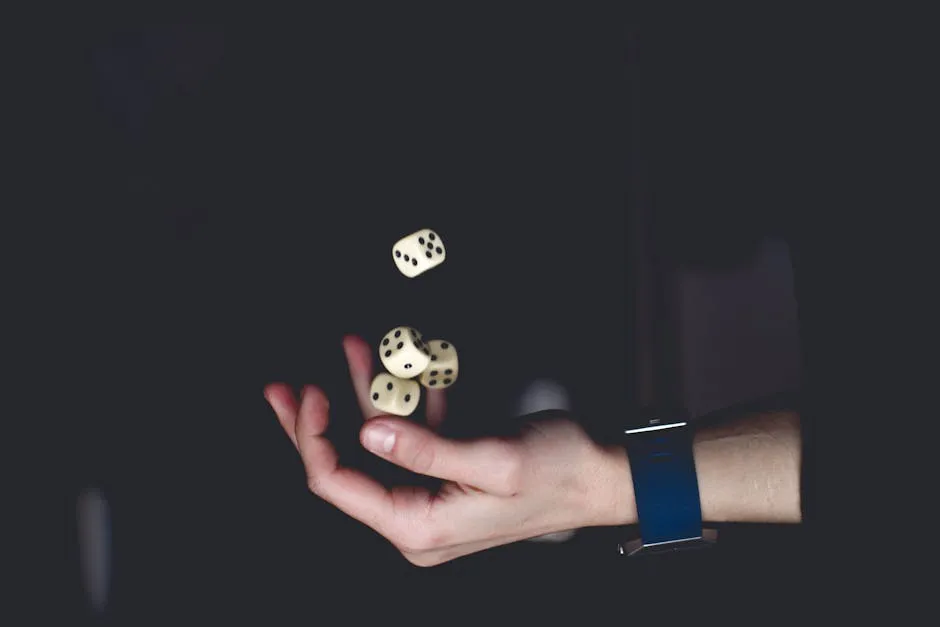
Trials and Outcomes
Trials are the repeated actions of an experiment, while outcomes are the results of those trials. For instance, if you toss a coin three times, each toss is a trial, and the resulting Heads or Tails are the outcomes. If you flipped it and got Heads, Tails, and then Heads again, your outcomes are {H, T, H}. This distinction is essential for tracking results over multiple trials and assessing their probabilities. Discover insights behind clinical trials and how trials are reported.
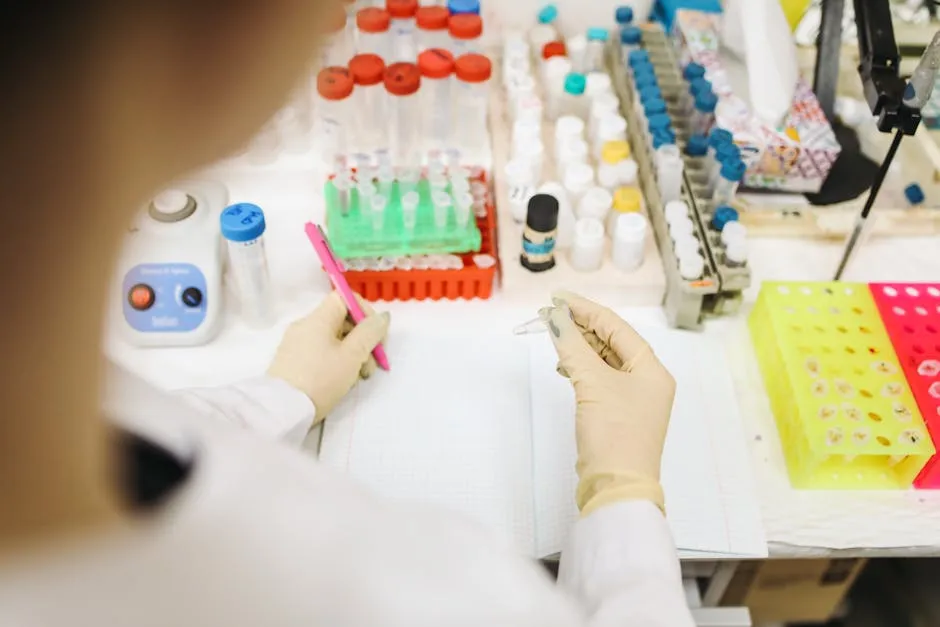
Equally Likely Events
Equally likely events are those that have the same chance of occurring. Imagine rolling a fair six-sided die. Each side, from 1 to 6, has an equal probability of landing face up—specifically, \( \frac{1}{6} \). Equally likely events simplify probability calculations, as you can apply straightforward reasoning to determine the likelihood of specific outcomes. For example, the chance of rolling a 2 or a 5 is simply the sum of their individual probabilities.

Types of Probability
Theoretical Probability
Theoretical probability is calculated based on the possible outcomes of an event. It’s the classic “if everything goes as expected” scenario. For example, when flipping a fair coin, there are two possible outcomes: Heads and Tails. Therefore, the theoretical probability of landing Heads is \( \frac{1}{2} \). This type of probability relies on logical reasoning rather than real-world data. If you want a deeper understanding of this concept, Thinking, Fast and Slow by Daniel Kahneman is a fantastic read that explores how we think and make decisions!

Experimental Probability
Experimental probability, on the other hand, is based on actual experiments and observations. If you flip a coin 100 times and get Heads 56 times, the experimental probability of getting Heads is \( \frac{56}{100} \) or 0.56. This approach provides a more realistic view of probabilities, as it considers factors like biases and variations that can affect outcomes.

Conditional Probability
Conditional probability involves the likelihood of an event occurring given that another event has already taken place. For example, if it’s known that it rained yesterday, what’s the probability it will rain today? This type of probability is crucial in various fields, including statistics and risk assessment. Bayes’ theorem is a key concept in conditional probability, allowing for updates in probabilities based on new information. If you’re interested in a comprehensive understanding of these concepts, The Book of Why: The New Science of Cause and Effect by Judea Pearl is a must-read!

Axiomatic Probability
Axiomatic probability, developed by Andrey Kolmogorov, is the foundation of modern probability theory. It establishes a set of axioms that define probability spaces, ensuring a rigorous mathematical framework. These axioms state that the probability of the entire sample space is 1, and probabilities must be non-negative. This structured approach allows mathematicians and statisticians to model complex scenarios with confidence, forming the backbone of probability theory. If you’re curious about the practical applications of probability theory, The Art of Statistics: Learning from Data by David Spiegelhalter is an enlightening choice!

Probability Formulas and Calculations
Basic Probability Formula
Probability measures the likelihood of an event occurring. To calculate this, we use a simple formula:
P(E) = \frac{\text{Number of Favorable Outcomes}}{\text{Total Number of Outcomes}}Here, P(E) represents the probability of event E. This formula gives a numerical value between 0 and 1, with 0 indicating impossibility and 1 indicating certainty. For instance, if you roll a fair six-sided die, the probability of rolling a 3 is:
P(3) = \frac{1}{6}because there’s only one way to roll a 3 out of six possible outcomes.

Addition and Multiplication Rules
Probability calculations often involve two fundamental rules: the addition rule and the multiplication rule.
Addition Rule for Mutually Exclusive Events: When dealing with mutually exclusive events—those that cannot occur simultaneously—the probability of either event happening is the sum of their individual probabilities. If events A and B cannot happen together, use:
P(A \cup B) = P(A) + P(B)For example, if you flip a coin, the probability of getting either Heads or Tails is:
P(H \cup T) = P(H) + P(T) = \frac{1}{2} + \frac{1}{2} = 1Multiplication Rule for Independent Events: For independent events—those whose outcomes do not affect each other—the probability of both events occurring is the product of their probabilities. If A and B are independent, use:
P(A \cap B) = P(A) \cdot P(B)If you roll a die and flip a coin, the probability of rolling a 4 and getting Heads is:
P(4 \cap H) = P(4) \cdot P(H) = \frac{1}{6} \cdot \frac{1}{2} = \frac{1}{12}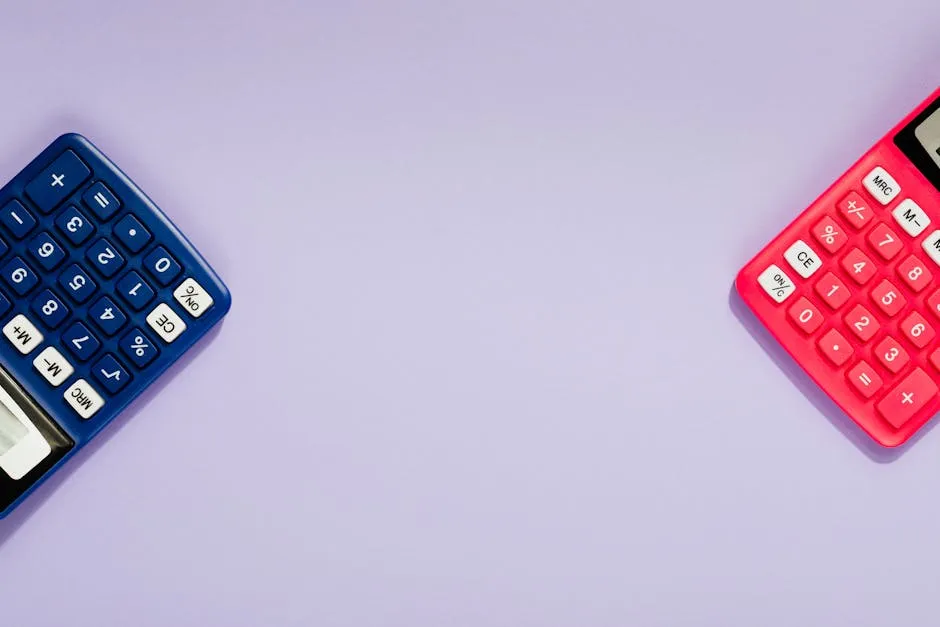
Conditional Probability Formula
Conditional probability deals with the likelihood of an event occurring given that another event has already occurred. The formula is:
P(B | A) = \frac{P(A \cap B)}{P(A)}This means the probability of event B happening, given that A has occurred. For example, if you know it’s raining (event A), the probability of someone carrying an umbrella (event B) changes based on this information. This concept is vital in statistics and data analysis, especially in risk assessment and decision-making. If you’re interested in a practical guide on risk assessment, check out Risk Assessment: A Practical Guide to Assessing Operational Risks by David W. W. Wong.

Examples of Calculating Probability
Let’s look at some real-world examples to illustrate how to calculate probability using coins, dice, and cards.
Example 1: Coins
When tossing a single coin, there are two possible outcomes: Heads (H) or Tails (T).
- Total outcomes: 2
- Favorable outcomes for Heads: 1
Thus, the probability of getting Heads is:
P(H) = \frac{1}{2}If you toss two coins, the sample space consists of four outcomes: {(H, H), (H, T), (T, H), (T, T)}. The probability of getting two Heads is:
P(2H) = \frac{1}{4}
Example 2: Dice
When rolling a standard six-sided die:
- Total outcomes: 6
- Favorable outcomes for rolling a 5: 1
The probability is:
P(5) = \frac{1}{6}If you roll two dice, there are 36 total outcomes. The probability of rolling a sum of 7 can be calculated by counting the favorable combinations: (1,6), (2,5), (3,4), (4,3), (5,2), (6,1). Thus, the probability is:
P(\text{Sum} = 7) = \frac{6}{36} = \frac{1}{6}Example 3: Playing Cards
In a standard deck of 52 cards, consider the probability of drawing an Ace:
- Total outcomes: 52
- Favorable outcomes for Aces: 4
So, the probability is:
P(\text{Ace}) = \frac{4}{52} = \frac{1}{13}If you want to calculate the probability of drawing a red card (hearts or diamonds):
- Favorable outcomes: 26 (13 hearts + 13 diamonds)
The probability is:
P(\text{Red Card}) = \frac{26}{52} = \frac{1}{2}Visualizing Probability: Tree Diagrams and Probability Lines
Probability Tree Diagrams
Probability tree diagrams are fantastic tools for visualizing different outcomes of an event. They help break down complex probabilities into manageable parts.
To create a tree diagram:
- Start with a single point representing the initial event.
- Draw branches for each possible outcome from that event.
- Continue branching for subsequent events.
For example, consider flipping a coin twice. The first flip can result in Heads (H) or Tails (T). Each branch then splits again based on the second flip, leading to outcomes: HH, HT, TH, TT. This visual aid not only clarifies the possible outcomes but also makes it easy to calculate probabilities.
To find the probability of a specific outcome, multiply the probabilities along the branches leading to that outcome. For instance, the probability of getting HT is:
P(HT) = P(H) \cdot P(T) = \frac{1}{2} \cdot \frac{1}{2} = \frac{1}{4}
Using Probability Lines
Probability lines are another helpful way to represent probabilities visually. They graphically show the range of probabilities from 0 to 1.
Imagine a horizontal line where:
- 0 indicates impossible events.
- 1 indicates certain events.
By plotting specific probabilities along this line, you can easily compare different events. For instance, if the probability of rain tomorrow is 0.3, you can mark this point on the line, showing that it’s more likely to be dry than rainy (since 0.5 would represent an even chance).
Probability lines can also help in understanding cumulative probabilities. For instance, if two events are mutually exclusive, their probabilities can be represented on the line, emphasizing how their total probability doesn’t exceed 1.
In conclusion, utilizing tree diagrams and probability lines enhances our understanding of probability, making it easier to visualize and calculate outcomes effectively.

Real-World Applications of Probability
In Business and Finance
Probability plays a crucial role in business and finance, helping companies make informed decisions. Risk assessment is one of the primary applications. Businesses often evaluate the likelihood of various risks, such as market fluctuations or project failures. By quantifying these risks, companies can devise strategies to mitigate potential losses.
For instance, a retail company might analyze historical sales data to forecast future sales. If the data indicates a 70% chance of increased sales during the holiday season, the company may decide to ramp up inventory and marketing efforts. This predictive modeling is essential for effective budgeting and resource allocation. If you’re interested in a great resource for this, check out How to Measure Anything: Finding the Value of “Intangibles” in Business by Douglas W. Hubbard.
Another significant area is investment analysis. Investors use probability to assess the risk of different assets. By calculating the expected returns and their variance, they can determine which investments align with their risk tolerance. Financial advisors often rely on probability to construct diversified portfolios that minimize risk while maximizing potential returns.

In Medicine
In the medical field, probability is indispensable, especially in clinical trials and medical predictions. When testing new treatments, researchers must understand the probability of success versus failure. This involves calculating the likelihood that a treatment will lead to a positive outcome for patients. Explore the role of probability in clinical trials and genetic studies.
For example, a clinical trial for a new drug might show a 75% probability of effectiveness based on preliminary data. This information is crucial for regulatory approval and informs doctors and patients about treatment options.
Additionally, probability helps in predicting patient outcomes. For instance, if a patient undergoes surgery, doctors can use statistical models to estimate the likelihood of recovery based on various factors like age and overall health. These assessments guide treatment plans and improve patient care. If you’re curious about more advanced statistical methods, consider Statistical Inference by George Casella!

In AI and Machine Learning
Artificial Intelligence and machine learning heavily rely on probability to make predictions and decisions. Algorithms use probabilistic models to analyze data and identify patterns. For example, a spam filter uses probability to determine whether an email is spam based on the likelihood of certain keywords appearing in the message.
Bayesian networks are another application of probability in AI. These networks model the relationships between different variables, allowing for more accurate predictions. For instance, in healthcare, AI can predict disease risk by evaluating symptoms and patient history through a probabilistic approach. If you want to learn more about this approach, The Elements of Statistical Learning: Data Mining, Inference, and Prediction by Trevor Hastie is an excellent resource!
Moreover, reinforcement learning, a subset of machine learning, uses probability to optimize decision-making in uncertain environments. Agents learn to make decisions based on the calculated probabilities of various actions leading to desirable outcomes.

In Everyday Life
Probability influences many everyday decisions, often without us realizing it. Take insurance, for example. When purchasing a policy, companies assess the probability of claims based on statistical data. If you’re considering car insurance, the insurer evaluates factors like your driving record, age, and location to calculate your premium. Essentially, they’re betting against the odds that you’ll file a claim.
Betting is another area where probability is front and center. Gamblers often rely on odds to make decisions. For instance, in a game of poker, players must assess the probability of winning based on their hand versus potential hands of other players. Understanding these probabilities can significantly affect the strategies they use. If you fancy a game night, consider getting a Poker Set with Chips and Cards!
Furthermore, probability plays a role when we decide whether to carry an umbrella based on the weather forecast. A 30% chance of rain might persuade some to take an umbrella, while others might opt to risk getting wet. These daily choices highlight how probability shapes our lives, often guiding decisions we make based on perceived risks and rewards.

Common Probability Problems and Solutions
Coin Tossing
Coin tossing is a classic example of probability. When flipping a fair coin, there are two possible outcomes: heads (H) or tails (T). The probability of landing heads is P(H) = \frac{1}{2}, and similarly, P(T) = \frac{1}{2}.
If you flip two coins, the sample space expands to four outcomes: {(H, H), (H, T), (T, H), (T, T)}. The probability of getting at least one head when flipping two coins calculates as follows:
P(\text{At least 1 H}) = 1 - P(\text{No H}) = 1 - P(T, T) = 1 - \frac{1}{4} = \frac{3}{4}
Dice Rolling
Rolling a die introduces more complexity. A standard six-sided die has six outcomes: {1, 2, 3, 4, 5, 6}. The probability of rolling any specific number, say a 4, is:
P(4) = \frac{1}{6}If you roll two dice, you can calculate the probability of rolling a sum of 7. The combinations that yield this sum are (1,6), (2,5), (3,4), (4,3), (5,2), and (6,1). There are six combinations out of a total of 36 possible outcomes, giving:
P(\text{Sum} = 7) = \frac{6}{36} = \frac{1}{6}Drawing Cards from a Deck
In a standard deck of 52 cards, the probability of drawing a specific card, like the Ace of Spades, is straightforward. There is only one Ace of Spades, so:
P(\text{Ace of Spades}) = \frac{1}{52}If you want to calculate the probability of drawing a heart, there are 13 hearts in a deck:
P(\text{Heart}) = \frac{13}{52} = \frac{1}{4}The Birthday Problem
The birthday problem poses an interesting question: What is the probability that, in a group of people, at least two share a birthday? Surprisingly, with just 23 people, there’s about a 50% chance that two will share a birthday. The calculation involves considering the probability that no two people share a birthday and subtracting it from 1.
With n people, the formula becomes:
P(\text{at least 2 share birthday}) = 1 - P(\text{no shared birthday})Calculating this for 23 people leads to the surprising result of a 50.7% chance of a shared birthday, showcasing how intuition can sometimes mislead us regarding probability! If you’re interested in a deeper dive into coincidences and rare events, The Improbability Principle: Why Coincidences, Miracles, and Rare Events Happen Every Day by David Hand is a great read!

Conclusion
Understanding probability is not just an academic exercise; it’s a vital tool for navigating the uncertainties of everyday life. Whether you’re predicting the weather or deciding on your next bet at the poker table, probability helps quantify the unknown. It’s the secret sauce behind informed decision-making.
In academia, probability is the backbone of statistics, enabling researchers to analyze data trends and draw meaningful conclusions. For instance, when evaluating clinical trials, understanding the probability of outcomes can significantly impact treatment decisions. Similarly, businesses leverage probability to assess risks and forecast trends, ensuring they remain competitive in a rapidly changing marketplace. If you’re curious about a comprehensive course on probability and statistics, check out Probability and Statistics for Engineering and Science by Anthony J. Hayter.
In practical contexts, probability shapes how we manage risks—whether in insurance policies, investments, or health care decisions. For example, if you’re considering whether to carry an umbrella, a weather forecast predicting a 40% chance of rain can guide your choice. This application of probability makes it a powerful tool in everyday life.
For those intrigued by the mathematical underpinnings of probability, further studies can reveal even more fascinating applications. From exploring advanced concepts like Bayesian probability to understanding the law of large numbers, there’s a wealth of knowledge waiting to be uncovered.
So, don’t just skim the surface—get curious! Pick up a book or take a course on probability theory. Trust us, your future self will thank you for it, especially when you’re making decisions that involve uncertainty. A fantastic start would be The Black Swan: The Impact of the Highly Improbable by Nassim Nicholas Taleb.
FAQs
Please let us know what you think about our content by leaving a comment down below!
Thank you for reading till here 🙂
All images from Pexels
Introduction
Probability is like a crystal ball for life’s unpredictability. It helps us gauge the chances of events happening. Think about checking the weather forecast. When the meteorologist says there’s a 70% chance of rain, that’s probability at work! Or consider gambling—whether you’re tossing dice, playing poker, or spinning the roulette wheel, probability is crucial. It’s the math behind those thrilling moments of chance.
But probability extends far beyond the realms of weather and casinos. In business, it helps companies assess risks and forecast sales. For example, if a company estimates a 60% probability of launching a successful product, it can make informed decisions about investments and marketing strategies. Artificial intelligence also relies heavily on probability. Algorithms use probability to improve predictions and learn from data.
Understanding probability is essential in various fields. In statistics, it forms the backbone for analyzing data trends. In science, it helps interpret experimental results. It’s even used in healthcare to predict patient outcomes based on treatment responses. If you’re intrigued to dive deeper into this fascinating subject, consider picking up The Drunkard’s Walk: How Randomness Rules Our Lives by Leonard Mlodinow. It’s a delightful read that blends humor and science, perfect for those who want to understand the randomness of life!
So, why should you care about probability? Because it influences many of our everyday choices! From deciding whether to carry an umbrella to betting on your favorite sports team, probability shapes our decisions. This guide will take you through the fascinating world of probability theory. We’ll cover definitions, key terms, types of probability, applications, and common problems. Get ready to open the door to a realm where chance and certainty meet!

Summary of Key Points
In this article, we dive into the nuances of probability, covering the following aspects:
- Definition of Probability: Understanding the likelihood of events occurring.
- Key Terminology: Familiarizing with essential terms like sample space, events, and trials.
- Types of Probability: Distinguishing between theoretical, experimental, and axiomatic probability.
- Probability Formulas: Learning how to calculate probability using established formulas.
- Applications: Exploring real-world applications in fields like statistics, business, and AI.
- Common Probability Problems: Solving popular problems involving coin tosses, dice rolls, and card games.
This guide aims not only to clarify concepts but also to spark curiosity about the practical implications of probability in our lives. You might also want to check out Probability: For the Enthusiastic Beginner by David Morin for a fascinating dive into the world of probability!

Key Terminology in Probability Theory
Experiment
In probability, an experiment is a process that leads to a set of outcomes. Think of it as a fancy term for any activity that produces results we can analyze. For example, tossing a coin or rolling a die are classic experiments. Each time you perform the experiment, the results may vary, but the rules remain the same. This consistency is what makes probability so powerful! Learn more about the essential features of statistically designed experiments.

Sample Space
The sample space is the grand collection of all possible outcomes of an experiment. If you toss a coin, the sample space is {Heads, Tails}. Roll a die? The sample space expands to {1, 2, 3, 4, 5, 6}. Understanding the sample space is crucial because it sets the stage for calculating probabilities. It’s like having a map before going on an adventure! If you’re looking for a fun way to explore probability, why not try out Dice: The Game of Life – A Classic Board Game? It’s a blast and teaches you about chance!

Events
Events are specific outcomes or combinations of outcomes from an experiment. They fall into two categories: simple and compound events. A simple event involves just one outcome, like getting a Head when tossing a coin. A compound event combines multiple outcomes, such as rolling an even number on a die (which includes 2, 4, and 6). Recognizing events helps in analyzing the likelihood of various results.

Trials and Outcomes
Trials are the repeated actions of an experiment, while outcomes are the results of those trials. For instance, if you toss a coin three times, each toss is a trial, and the resulting Heads or Tails are the outcomes. If you flipped it and got Heads, Tails, and then Heads again, your outcomes are {H, T, H}. This distinction is essential for tracking results over multiple trials and assessing their probabilities. Discover insights behind clinical trials and how trials are reported.

Equally Likely Events
Equally likely events are those that have the same chance of occurring. Imagine rolling a fair six-sided die. Each side, from 1 to 6, has an equal probability of landing face up—specifically, \( \frac{1}{6} \). Equally likely events simplify probability calculations, as you can apply straightforward reasoning to determine the likelihood of specific outcomes. For example, the chance of rolling a 2 or a 5 is simply the sum of their individual probabilities.

Types of Probability
Theoretical Probability
Theoretical probability is calculated based on the possible outcomes of an event. It’s the classic “if everything goes as expected” scenario. For example, when flipping a fair coin, there are two possible outcomes: Heads and Tails. Therefore, the theoretical probability of landing Heads is \( \frac{1}{2} \). This type of probability relies on logical reasoning rather than real-world data. If you want a deeper understanding of this concept, Thinking, Fast and Slow by Daniel Kahneman is a fantastic read that explores how we think and make decisions!

Experimental Probability
Experimental probability, on the other hand, is based on actual experiments and observations. If you flip a coin 100 times and get Heads 56 times, the experimental probability of getting Heads is \( \frac{56}{100} \) or 0.56. This approach provides a more realistic view of probabilities, as it considers factors like biases and variations that can affect outcomes.

Conditional Probability
Conditional probability involves the likelihood of an event occurring given that another event has already taken place. For example, if it’s known that it rained yesterday, what’s the probability it will rain today? This type of probability is crucial in various fields, including statistics and risk assessment. Bayes’ theorem is a key concept in conditional probability, allowing for updates in probabilities based on new information. If you’re interested in a comprehensive understanding of these concepts, The Book of Why: The New Science of Cause and Effect by Judea Pearl is a must-read!

Axiomatic Probability
Axiomatic probability, developed by Andrey Kolmogorov, is the foundation of modern probability theory. It establishes a set of axioms that define probability spaces, ensuring a rigorous mathematical framework. These axioms state that the probability of the entire sample space is 1, and probabilities must be non-negative. This structured approach allows mathematicians and statisticians to model complex scenarios with confidence, forming the backbone of probability theory. If you’re curious about the practical applications of probability theory, The Art of Statistics: Learning from Data by David Spiegelhalter is an enlightening choice!

Probability Formulas and Calculations
Basic Probability Formula
Probability measures the likelihood of an event occurring. To calculate this, we use a simple formula:
P(E) = \frac{\text{Number of Favorable Outcomes}}{\text{Total Number of Outcomes}}Here, P(E) represents the probability of event E. This formula gives a numerical value between 0 and 1, with 0 indicating impossibility and 1 indicating certainty. For instance, if you roll a fair six-sided die, the probability of rolling a 3 is:
P(3) = \frac{1}{6}because there’s only one way to roll a 3 out of six possible outcomes.

Addition and Multiplication Rules
Probability calculations often involve two fundamental rules: the addition rule and the multiplication rule.
Addition Rule for Mutually Exclusive Events: When dealing with mutually exclusive events—those that cannot occur simultaneously—the probability of either event happening is the sum of their individual probabilities. If events A and B cannot happen together, use:
P(A \cup B) = P(A) + P(B)For example, if you flip a coin, the probability of getting either Heads or Tails is:
P(H \cup T) = P(H) + P(T) = \frac{1}{2} + \frac{1}{2} = 1Multiplication Rule for Independent Events: For independent events—those whose outcomes do not affect each other—the probability of both events occurring is the product of their probabilities. If A and B are independent, use:
P(A \cap B) = P(A) \cdot P(B)If you roll a die and flip a coin, the probability of rolling a 4 and getting Heads is:
P(4 \cap H) = P(4) \cdot P(H) = \frac{1}{6} \cdot \frac{1}{2} = \frac{1}{12}
Conditional Probability Formula
Conditional probability deals with the likelihood of an event occurring given that another event has already occurred. The formula is:
P(B | A) = \frac{P(A \cap B)}{P(A)}This means the probability of event B happening, given that A has occurred. For example, if you know it’s raining (event A), the probability of someone carrying an umbrella (event B) changes based on this information. This concept is vital in statistics and data analysis, especially in risk assessment and decision-making. If you’re interested in a practical guide on risk assessment, check out Risk Assessment: A Practical Guide to Assessing Operational Risks by David W. W. Wong.

Examples of Calculating Probability
Let’s look at some real-world examples to illustrate how to calculate probability using coins, dice, and cards.
Example 1: Coins
When tossing a single coin, there are two possible outcomes: Heads (H) or Tails (T).
- Total outcomes: 2
- Favorable outcomes for Heads: 1
Thus, the probability of getting Heads is:
P(H) = \frac{1}{2}If you toss two coins, the sample space consists of four outcomes: {(H, H), (H, T), (T, H), (T, T)}. The probability of getting two Heads is:
P(2H) = \frac{1}{4}
Example 2: Dice
When rolling a standard six-sided die:
- Total outcomes: 6
- Favorable outcomes for rolling a 5: 1
The probability is:
P(5) = \frac{1}{6}If you roll two dice, there are 36 total outcomes. The probability of rolling a sum of 7 can be calculated by counting the favorable combinations: (1,6), (2,5), (3,4), (4,3), (5,2), (6,1). Thus, the probability is:
P(\text{Sum} = 7) = \frac{6}{36} = \frac{1}{6}Example 3: Playing Cards
In a standard deck of 52 cards, consider the probability of drawing an Ace:
- Total outcomes: 52
- Favorable outcomes for Aces: 4
So, the probability is:
P(\text{Ace}) = \frac{4}{52} = \frac{1}{13}If you want to calculate the probability of drawing a red card (hearts or diamonds):
- Favorable outcomes: 26 (13 hearts + 13 diamonds)
The probability is:
P(\text{Red Card}) = \frac{26}{52} = \frac{1}{2}Visualizing Probability: Tree Diagrams and Probability Lines
Probability Tree Diagrams
Probability tree diagrams are fantastic tools for visualizing different outcomes of an event. They help break down complex probabilities into manageable parts.
To create a tree diagram:
- Start with a single point representing the initial event.
- Draw branches for each possible outcome from that event.
- Continue branching for subsequent events.
For example, consider flipping a coin twice. The first flip can result in Heads (H) or Tails (T). Each branch then splits again based on the second flip, leading to outcomes: HH, HT, TH, TT. This visual aid not only clarifies the possible outcomes but also makes it easy to calculate probabilities.
To find the probability of a specific outcome, multiply the probabilities along the branches leading to that outcome. For instance, the probability of getting HT is:
P(HT) = P(H) \cdot P(T) = \frac{1}{2} \cdot \frac{1}{2} = \frac{1}{4}
Using Probability Lines
Probability lines are another helpful way to represent probabilities visually. They graphically show the range of probabilities from 0 to 1.
Imagine a horizontal line where:
- 0 indicates impossible events.
- 1 indicates certain events.
By plotting specific probabilities along this line, you can easily compare different events. For instance, if the probability of rain tomorrow is 0.3, you can mark this point on the line, showing that it’s more likely to be dry than rainy (since 0.5 would represent an even chance).
Probability lines can also help in understanding cumulative probabilities. For instance, if two events are mutually exclusive, their probabilities can be represented on the line, emphasizing how their total probability doesn’t exceed 1.
In conclusion, utilizing tree diagrams and probability lines enhances our understanding of probability, making it easier to visualize and calculate outcomes effectively.

Real-World Applications of Probability
In Business and Finance
Probability plays a crucial role in business and finance, helping companies make informed decisions. Risk assessment is one of the primary applications. Businesses often evaluate the likelihood of various risks, such as market fluctuations or project failures. By quantifying these risks, companies can devise strategies to mitigate potential losses.
For instance, a retail company might analyze historical sales data to forecast future sales. If the data indicates a 70% chance of increased sales during the holiday season, the company may decide to ramp up inventory and marketing efforts. This predictive modeling is essential for effective budgeting and resource allocation. If you’re interested in a great resource for this, check out How to Measure Anything: Finding the Value of “Intangibles” in Business by Douglas W. Hubbard.
Another significant area is investment analysis. Investors use probability to assess the risk of different assets. By calculating the expected returns and their variance, they can determine which investments align with their risk tolerance. Financial advisors often rely on probability to construct diversified portfolios that minimize risk while maximizing potential returns.

In Medicine
In the medical field, probability is indispensable, especially in clinical trials and medical predictions. When testing new treatments, researchers must understand the probability of success versus failure. This involves calculating the likelihood that a treatment will lead to a positive outcome for patients. Explore the role of probability in clinical trials and genetic studies.
For example, a clinical trial for a new drug might show a 75% probability of effectiveness based on preliminary data. This information is crucial for regulatory approval and informs doctors and patients about treatment options.
Additionally, probability helps in predicting patient outcomes. For instance, if a patient undergoes surgery, doctors can use statistical models to estimate the likelihood of recovery based on various factors like age and overall health. These assessments guide treatment plans and improve patient care. If you’re curious about more advanced statistical methods, consider Statistical Inference by George Casella!

In AI and Machine Learning
Artificial Intelligence and machine learning heavily rely on probability to make predictions and decisions. Algorithms use probabilistic models to analyze data and identify patterns. For example, a spam filter uses probability to determine whether an email is spam based on the likelihood of certain keywords appearing in the message.
Bayesian networks are another application of probability in AI. These networks model the relationships between different variables, allowing for more accurate predictions. For instance, in healthcare, AI can predict disease risk by evaluating symptoms and patient history through a probabilistic approach. If you want to learn more about this approach, The Elements of Statistical Learning: Data Mining, Inference, and Prediction by Trevor Hastie is an excellent resource!
Moreover, reinforcement learning, a subset of machine learning, uses probability to optimize decision-making in uncertain environments. Agents learn to make decisions based on the calculated probabilities of various actions leading to desirable outcomes.

In Everyday Life
Probability influences many everyday decisions, often without us realizing it. Take insurance, for example. When purchasing a policy, companies assess the probability of claims based on statistical data. If you’re considering car insurance, the insurer evaluates factors like your driving record, age, and location to calculate your premium. Essentially, they’re betting against the odds that you’ll file a claim.
Betting is another area where probability is front and center. Gamblers often rely on odds to make decisions. For instance, in a game of poker, players must assess the probability of winning based on their hand versus potential hands of other players. Understanding these probabilities can significantly affect the strategies they use. If you fancy a game night, consider getting a Poker Set with Chips and Cards!
Furthermore, probability plays a role when we decide whether to carry an umbrella based on the weather forecast. A 30% chance of rain might persuade some to take an umbrella, while others might opt to risk getting wet. These daily choices highlight how probability shapes our lives, often guiding decisions we make based on perceived risks and rewards.

Common Probability Problems and Solutions
Coin Tossing
Coin tossing is a classic example of probability. When flipping a fair coin, there are two possible outcomes: heads (H) or tails (T). The probability of landing heads is P(H) = \frac{1}{2}, and similarly, P(T) = \frac{1}{2}.
If you flip two coins, the sample space expands to four outcomes: {(H, H), (H, T), (T, H), (T, T)}. The probability of getting at least one head when flipping two coins calculates as follows:
P(\text{At least 1 H}) = 1 - P(\text{No H}) = 1 - P(T, T) = 1 - \frac{1}{4} = \frac{3}{4}
Dice Rolling
Rolling a die introduces more complexity. A standard six-sided die has six outcomes: {1, 2, 3, 4, 5, 6}. The probability of rolling any specific number, say a 4, is:
P(4) = \frac{1}{6}If you roll two dice, you can calculate the probability of rolling a sum of 7. The combinations that yield this sum are (1,6), (2,5), (3,4), (4,3), (5,2), and (6,1). There are six combinations out of a total of 36 possible outcomes, giving:
P(\text{Sum} = 7) = \frac{6}{36} = \frac{1}{6}Drawing Cards from a Deck
In a standard deck of 52 cards, the probability of drawing a specific card, like the Ace of Spades, is straightforward. There is only one Ace of Spades, so:
P(\text{Ace of Spades}) = \frac{1}{52}If you want to calculate the probability of drawing a heart, there are 13 hearts in a deck:
P(\text{Heart}) = \frac{13}{52} = \frac{1}{4}The Birthday Problem
The birthday problem poses an interesting question: What is the probability that, in a group of people, at least two share a birthday? Surprisingly, with just 23 people, there’s about a 50% chance that two will share a birthday. The calculation involves considering the probability that no two people share a birthday and subtracting it from 1.
With n people, the formula becomes:
P(\text{at least 2 share birthday}) = 1 - P(\text{no shared birthday})Calculating this for 23 people leads to the surprising result of a 50.7% chance of a shared birthday, showcasing how intuition can sometimes mislead us regarding probability! If you’re interested in a deeper dive into coincidences and rare events, The Improbability Principle: Why Coincidences, Miracles, and Rare Events Happen Every Day by David Hand is a great read!

Conclusion
Understanding probability is not just an academic exercise; it’s a vital tool for navigating the uncertainties of everyday life. Whether you’re predicting the weather or deciding on your next bet at the poker table, probability helps quantify the unknown. It’s the secret sauce behind informed decision-making.
In academia, probability is the backbone of statistics, enabling researchers to analyze data trends and draw meaningful conclusions. For instance, when evaluating clinical trials, understanding the probability of outcomes can significantly impact treatment decisions. Similarly, businesses leverage probability to assess risks and forecast trends, ensuring they remain competitive in a rapidly changing marketplace. If you’re curious about a comprehensive course on probability and statistics, check out Probability and Statistics for Engineering and Science by Anthony J. Hayter.
In practical contexts, probability shapes how we manage risks—whether in insurance policies, investments, or health care decisions. For example, if you’re considering whether to carry an umbrella, a weather forecast predicting a 40% chance of rain can guide your choice. This application of probability makes it a powerful tool in everyday life.
For those intrigued by the mathematical underpinnings of probability, further studies can reveal even more fascinating applications. From exploring advanced concepts like Bayesian probability to understanding the law of large numbers, there’s a wealth of knowledge waiting to be uncovered.
So, don’t just skim the surface—get curious! Pick up a book or take a course on probability theory. Trust us, your future self will thank you for it, especially when you’re making decisions that involve uncertainty. A fantastic start would be The Black Swan: The Impact of the Highly Improbable by Nassim Nicholas Taleb.
FAQs
Please let us know what you think about our content by leaving a comment down below!
Thank you for reading till here 🙂
All images from Pexels

